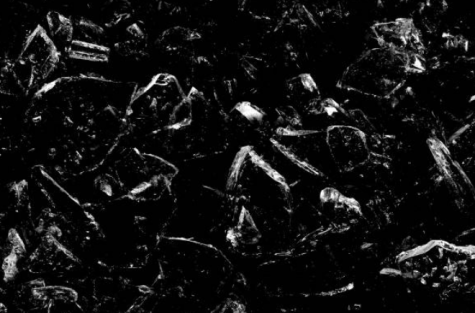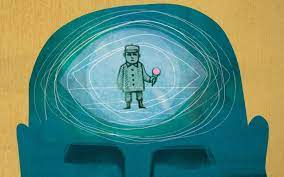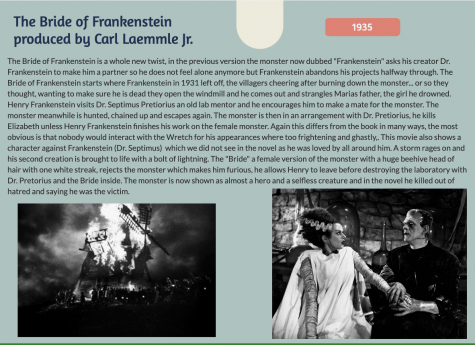The Science Of Morality
One hundred and thirty years after The Scientific Revolution, the science of electricity was discovered, creating the perfect atmosphere for Mary Shelley to write her horror novel, Frankenstein: “Perhaps a corpse would be reanimated; galvanism had given token to such things: perhaps the component parts of a creature might be manufactured, brought together, and imbued with vital warmth” (Shelley xxvi).
Science is woven into the fabric of our current day society. It enters all aspects of our lives and for the most part, is deeply trusted. Ever since the Scientific Revolution during the 16th and 17th centuries, individuals have shifted from simply accepting what they were told by the Catholic Church or other authorities to believing what they studied and observed. Along with this change in behavior came exponential scientific growth that has forced society and individuals to place moral standards and ethics at the fulcrum of a scale balancing achievement and progress against caution and care.
One hundred and thirty years after The Scientific Revolution, the science of electricity was discovered, creating the perfect atmosphere for Mary Shelley to write her horror novel, Frankenstein: “Perhaps a corpse would be reanimated; galvanism had given token to such things: perhaps the component parts of a creature might be manufactured, brought together, and imbued with vital warmth” (Shelley xxvi). Galvanism is the idea that electricity could restart life by kickstarting the nervous system, which we now know is not true. Frankenstein brought to light a significant and fundamental issue in science: the moral and ethical dilemmas that extreme scientific experiments create. Scientists are always trying to push the envelope to discover the newest, latest, and greatest technology, and these goals can sometimes blind scientists from the principles and ethics they should be employing in their experiments. In Frankenstein, Victor Frankenstein successfully animates a corpse composed of dead body parts using the science of Galvanism which at the time, was a very extreme and advanced idea. Unfortunately, the Wretch, who was made in the name of science, is disfigured and hideous and quickly becomes an outcast that society rejects. The Wretch is miserable and longs for a companion. He gives Victor an ultimatum: bring a companion to life for him using Galvanism, or he will make Victor’s existence as grievous and intolerable as possible by killing all of Victor’s friends and family. This ultimatum forces Victor into a moral dilemma involving sentiments for the Wretch, personal concerns about the safety of his family, and apprehension regarding the larger picture and society as a whole if the Wretch were to reproduce and create a monster species.
Faced with the ultimatum, the decision Victor would have to make would break morals regardless. If he did decide to create a companion for the Wretch, he would break scientific morals by conducting unsafe experiments and allowing the possibility of a “monster” species that would threaten humanity. However, he decided to destroy the Wretch’s companion and in doing so sacrificed his friends and family, going against his own morals. By forging on with his experiments in the fields of electricity and Galvanism, Victor Frankenstein was faced with a problematic situation in which morals would inevitably be challenged. Today, scientific boundaries are still being pushed and in turn, society is continually having to evaluate questions of morality.
One scientific field that has been surrounded by a large moral debate is genetic engineering. The newly emerging technology has an alarming potential to change society as we know it. Imagine a society where individuals could pay a hefty sum to be able to pick their offspring’s traits, including height, immunity to certain diseases, hair color, and virtually any other physical trait (Lagay). Now imagine that employers, health care companies, or others could access a database containing different individuals’ genetic data. Genetic engineering could affect health care or employment opportunities, increase socioeconomic gaps, and even introduce genetic discrimination (Cukier). While genetic engineering could save lives and appeal to many individuals by providing more preferable traits, the path to safely modifying genes would most likely involve immoral, unsafe experiments and individuals could suffer from discrimination based on “inferior” genetics. How much of the future of genetic engineering is morally acceptable?
An experiment in 2018 conducted by He Jiankui in China shows just how much potential genetic engineering has, but also how easily moral standards can be broken. He Jiankui successfully turned off the gene CCR5, a gene that allows HIV to enter cells, in twin girls while they were still embryos. In doing so, He Jiankui made the girls immune to HIV and in theory, the girls’ offspring as well (Johnson). While this was a huge step for the genetic engineering community, it was a tainted one as well. After He published his research, the scientific community as a whole criticized Dr. Jiankui for being unsafe and irrational during his experiments. An article published in June 2019 by the University of California San Diego described Jiankui’s experiments as “scientifically premature, technically flawed, and ethically indefensible” (Friedmann). He Jiankui then tried to flee his country, a startling parallel to Victor Frankenstein’s journey. He was detained and sentenced to three years in prison and a heavy fine (Cyranoski). Jiankuis’s efforts were detrimental to himself and society, similar to Victor Frankenstein’s, because of the risks he took when faced with a moral dilemma brought on by new scientific opportunities.
Another particularly complex moral dilemma occurred during World War II when Albert Einstein feared that Germany was using atoms to develop a new bomb with the intent of using it in the war. Through his work and that of his colleagues, Einstein knew that a large reaction could be created using highly reactive metal uranium atoms. If this reaction could be controlled in a closed environment, a lethal bomb would be created, undoubtedly changing the course of the war and possibly humanity (Lipscombe). Albert Einstein knew this. He had gained advanced knowledge in his studies and was now faced with a difficult decision. Should he warn the U.S. government of the chance of a new atomic bomb, at the same time giving the U.S. power to create their own? Or should he stay quiet, and hope Germany was not as close to finalizing their new weapon as he thought?
Einstein’s situation resembles the moral dilemmas faced by Victor Frankenstein and He Jiankui. Once again, a pioneering scientist was at the front of his field of research, making breakthrough discoveries. Once again, a decision with moral implications had to be made as a result of developing potentially harmful technology. In the end, Einstein wrote a letter to the President at the time, Franklin D. Roosevelt. Einstein warned the president, writing “it may become possible to set up a nuclear chain reaction in a large mass of uranium, by which vast amounts of power . . . would be generated”. He also urged the president to take action, saying “Now it appears almost certain that this could be achieved in the immediate future” (Lipscombe). Six years later, the first two atomic bombs were dropped on Hiroshima and Nagasaki, Japan by the United States. These two abominable bombs killed 200,000 people in total, some died instantly, others three to four weeks later due to radiation poisoning, and still others died after years of suffering from injuries and health conditions caused by the bombs (Manhattan Engineer District). The mortal attack arguably would not have happened without the letter from Albert Einstein, which would have spared hundreds of thousands of lives. Additionally, although only two atomic bombs have been used in history so far, Einstein helped accelerate the technology of atomic bombs and the possibility of a nuclear war sometime in the future. On the other side, the end of World War II was largely aided by the bombing, as the war ended only one month after the detonation of the two historic bombs. Einstein’s letter helped bring the largest and deadliest war in our history to a close, ending a horrific genocide and a series of events that is well known as an example of humanity at its worst. However, one can argue that there could have been a humane solution to the war.
Victor Frankenstein, He Jiankui, and Albert Einstein were each pioneers on the forefront of their scientific field and were each consequently forced into a moral dilemma regarding whether they should continue and share their findings or stop and prevent a morally questionable scientific outcome from becoming widespread. An article published by Scientific American in 2008 examining the letter Einstein wrote to President Roosevelt proposed three main aspects Einstein had to juggle when making his moral judgment: “moral sentiment (his concern about the outcome of World War II); recognition of a moral dilemma (whether to disclose scientific evidence that could lead to a fearsomely lethal new weapon) and a utilitarian calculus (Would more lives be spared if America rather than Germany eventually built such a weapon?)” (Moll and de Oliveira-Souza). One could also apply these three aspects to the moral judgments of He Jiankui and Victor Frankenstein. He Jiankui encountered moral sentiment (his hopes of fame and high achievement after completing his experiment), recognition of a moral dilemma (the possibility of his technology being used negatively in the future), and a utilitarian calculus (would his technology harm the two girls or any future recipients). Victor Frankenstein encountered moral sentiment (his feelings of sympathy for the poor Wretch), recognition of a moral dilemma (the possibility of the wretch killing his friends and family or taking revenge and attacking all of humanity), and utilitarian calculus (would more lives be spared if he created or didn’t create the Wretch’s companion). All three scientists faced a moral dilemma consisting of personal sentiment, moral predicament, and utilitarian calculus with many lives at stake.
A noteworthy pattern arises when examining each scientist’s decision in the face of a complex moral dilemma. Albert Einstein completed his original plan and decided to warn the U.S. government without any real knowledge of how far the Germans had advanced with an atomic bomb. He Jiankui followed through with his genetic engineering experiment, although he knew it could be unsafe and poorly received by the scientific community. Victor Frankenstein, on the other hand, decided to go against his original plan and destroy his work. Not only is Victor the only scientist to thoroughly weigh his moral options and go against his first inclination, but he is also the only fictional character. Coincidence? Maybe. Or perhaps Mary Shelley is trying to convey a deeper message to her readers. As we gain new scientific knowledge and develop new technologies, the scientists at the forefront of their fields need to deeply weigh the morality of their actions. Scientists must look at every angle of a dilemma and consider the implications to themselves, their communities, their societies, and humanity as a whole. As human beings, we race to gain new knowledge and attempt to advance ourselves scientifically, technologically, medically, etc. Unfortunately, in the heat of the race, we often forget that there is a set of unwritten rules we must follow; morals that we collectively share as human beings. The cards are stacked for scientific growth–people get excited about new technologies, and we like to feel that as humans we are becoming more advanced. As we move into the future, the potential to create new and advanced technologies will present itself, and it is an obligation for us as humans to emphasize our moral judgment, even if it means delaying new technology for the time being. Meanwhile, we all should sit down and reread the classic by Mary Shelley, Frankenstein and recognize her warning conveyed through Victor Frankenstein.
MLA Bibliography
Cukier, Kenneth. “How genetic engineering will reshape humanity”. The Economist, 25 April 2019, www.economist.com/open-future/2019/04/25/how-genetic-engineering-
will-reshape-humanity. Accessed March 2022.
Cyranoski, David. “The CRISPR-baby scandal: what’s next for human gene-editing”. Nature, 26 Feb. 2019, www.nature.com/articles/d41586-019-00673-1. Accessed March 2022.
Friedmann, Theodore. “Genetic therapies, human genetic enhancement, and … eugenics?”
Nature, 4 July 2019, www.nature.com/articles/s41434-019-0088-1. Accessed March 2022.
Johnson, Tess. “Human genetic enhancement might soon be possible – but where do we draw the line?” The Conversation, 3 Dec. 2019, theconversation.com/human-genetic-
enhancement-might-soon-be-possible-but-where-do-we-draw-the-line-127406.
Accessed March 2022.
Lagay, Faith. “Is Genetic Enhancement a Gift to Future Generations?” AMA Journal of Ethics, 2 Dec. 2000, journalofethics.ama-assn.org/article/genetic-enhancement-gift-
future-generations/2000-12. Accessed March 2022.
Lipscombe, Trevor. “Einstein Feared a Nazi Atom Bomb—But Immigrants Made Sure the U.S. Got There First”. TIME, 2 Aug. 2019, time.com/5641891/einstein-szilard-letter/. Accessed March 2002.
Manhattan Engineer District. “The Atomic Bombings of Hiroshima and Nagasaki”. atomic archive.com, 29 June 1946, https://www.atomicarchive.com/resources/documents/med/
index.html. Accessed March 2022.
Moll, Jorge and Ricardo de Oliveira-Souza. “When Morality Is Hard to Like”. Scientific American Mind, Vol. 19, No. 1, Feb. 2008, pp. 30-35, JSTOR, www.jstor.org/stable/24939802?seq=1. Accessed March 2022.
Shelley, Mary. Frankenstein. 1818. Bantam Classic Edition, Bantam Dell, 2003.




